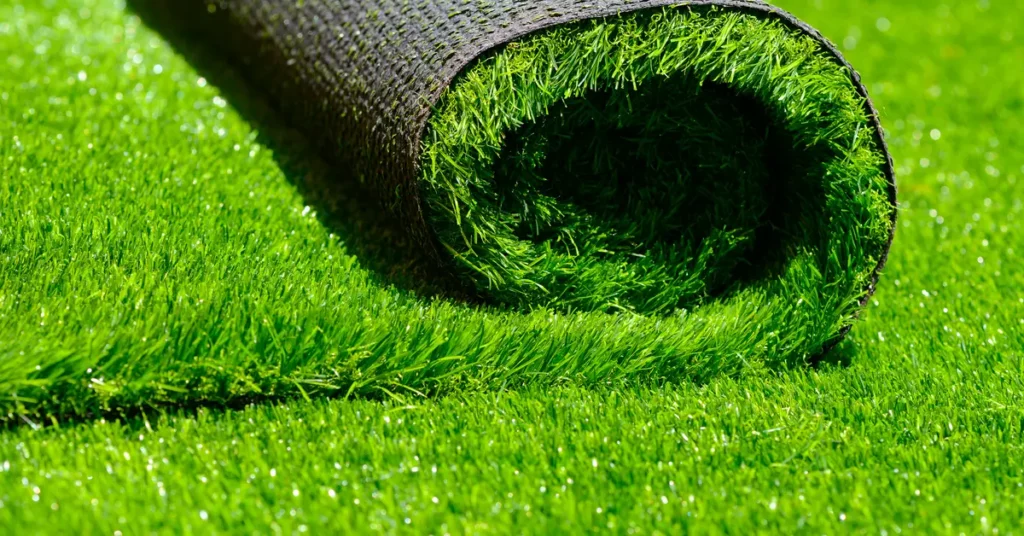Artificial turf offers a beautiful, low-maintenance alternative to natural grass, but like any outdoor surface, it requires some care to keep it looking fresh and healthy. One common issue that can arise, especially in humid or damp climates, is the growth of mold and mildew on artificial turf. This can happen when moisture is trapped in the turf fibers, creating an environment conducive to mold growth. At Goat Turf, we’re dedicated to helping you maintain a pristine, vibrant artificial lawn, so here are some essential tips to prevent mold and mildew and keep your turf looking its best.
Ensure Proper Drainage During Installation
The foundation of a healthy artificial turf lawn starts with proper installation. Quality turf products come with a well-designed drainage system, allowing water to move freely through the surface and preventing standing water, which is a primary cause of mold and mildew. When installing artificial turf, make sure it has a suitable base material, such as crushed gravel, that encourages water to drain quickly. This minimizes moisture retention and reduces the risk of mold development.
Tip: Choose a professional installer who understands the importance of proper grading and drainage for artificial turf. Goat Turf installations are designed to support optimal drainage, helping prevent issues like mold and mildew from the start.
Clean Debris Regularly
Leaves, dirt, and other debris can build up on artificial turf, trapping moisture beneath them and creating pockets where mold and mildew can grow. To prevent this, regularly remove debris from your turf using a leaf blower or a gentle rake. Keeping the surface clean helps maintain airflow and sunlight exposure, which dries the turf more effectively and reduces mold growth.
Tip: Schedule a quick sweep or cleaning at least once a week to keep your turf free of organic debris. This simple step can go a long way in preventing moisture-related issues.
Rinse the Turf After Rain and Spills
After heavy rain or exposure to spills, it’s a good idea to rinse the turf with a hose to ensure that any residual moisture or organic material is washed away. Rain can often deposit dirt and other particles onto the turf surface, which may lead to mold formation if not rinsed off. Rinsing the turf will also help flush out any organic residue from spills, keeping the area clean and less hospitable to mold.
Tip: Use a garden hose with a gentle spray setting to rinse the surface. Avoid high-pressure sprays, as these can damage the turf fibers.
Apply a Turf-Friendly Antimicrobial Solution
To keep your artificial turf extra protected, consider applying an antimicrobial solution specifically formulated for turf. These treatments can prevent bacteria, mold, and mildew from taking root on your lawn, creating an added layer of defense. Be sure to choose products that are safe for pets and won’t degrade the quality of your turf.
Tip: Antimicrobial treatments are most effective when applied every few months, particularly in high-humidity areas. Consult with a professional to ensure you’re using the right product for your turf type.
Brush and Aerate the Turf Regularly
One of the best ways to maintain a healthy artificial lawn is to brush it regularly. Brushing not only helps lift the turf fibers for a more natural appearance but also increases airflow through the material, promoting quicker drying. If your turf has infill, aerate it every few months to avoid compaction, which can trap moisture and encourage mold growth.
Tip: Use a soft-bristle brush to groom the turf fibers and prevent matting. This will help your turf dry faster and stay mold-free even during damp seasons.
Address Pet Waste Immediately
If you have pets, it’s essential to clean up pet waste as soon as possible. Pet urine and feces leave organic residue on the turf, which can lead to unpleasant odors and mold if not promptly cleaned. Remove solid waste with a scooper, then rinse the area thoroughly with water. For added freshness, you can use a turf-safe pet deodorizer that’s formulated to neutralize odors without harming the turf.
Tip: For pet owners, rinsing the turf in frequently used areas every few days can prevent any lingering moisture or organic buildup.
Prevent Excessive Shade
While shade is often a welcome addition to any outdoor area, too much shade can hinder airflow and slow down drying time, increasing the risk of mold and mildew. Try to ensure that your turf receives at least some direct sunlight each day. Sunlight acts as a natural disinfectant, helping to keep mold at bay. If parts of your lawn are heavily shaded, consider occasional cleaning with an antimicrobial solution to compensate for the lack of sunlight.
Tip: If shade is unavoidable, use fans or open up shaded areas to increase airflow and minimize the risk of moisture buildup.
Keep Your Lawn Healthy and Mold-Free with Goat Turf
Maintaining a clean and mold-free artificial lawn doesn’t have to be challenging. With the right preventive measures, you can ensure your turf remains a beautiful, healthy, and inviting space all year round. By investing in proper drainage, regular cleaning, and occasional antimicrobial treatments, you can enjoy the low-maintenance benefits of artificial turf without worrying about mold or mildew.
At Goat Turf, we specialize in high-quality artificial turf solutions designed for durability and easy maintenance. Contact us today to learn more about our turf products and installation services, and let us help you create an outdoor space that looks great in every season!

